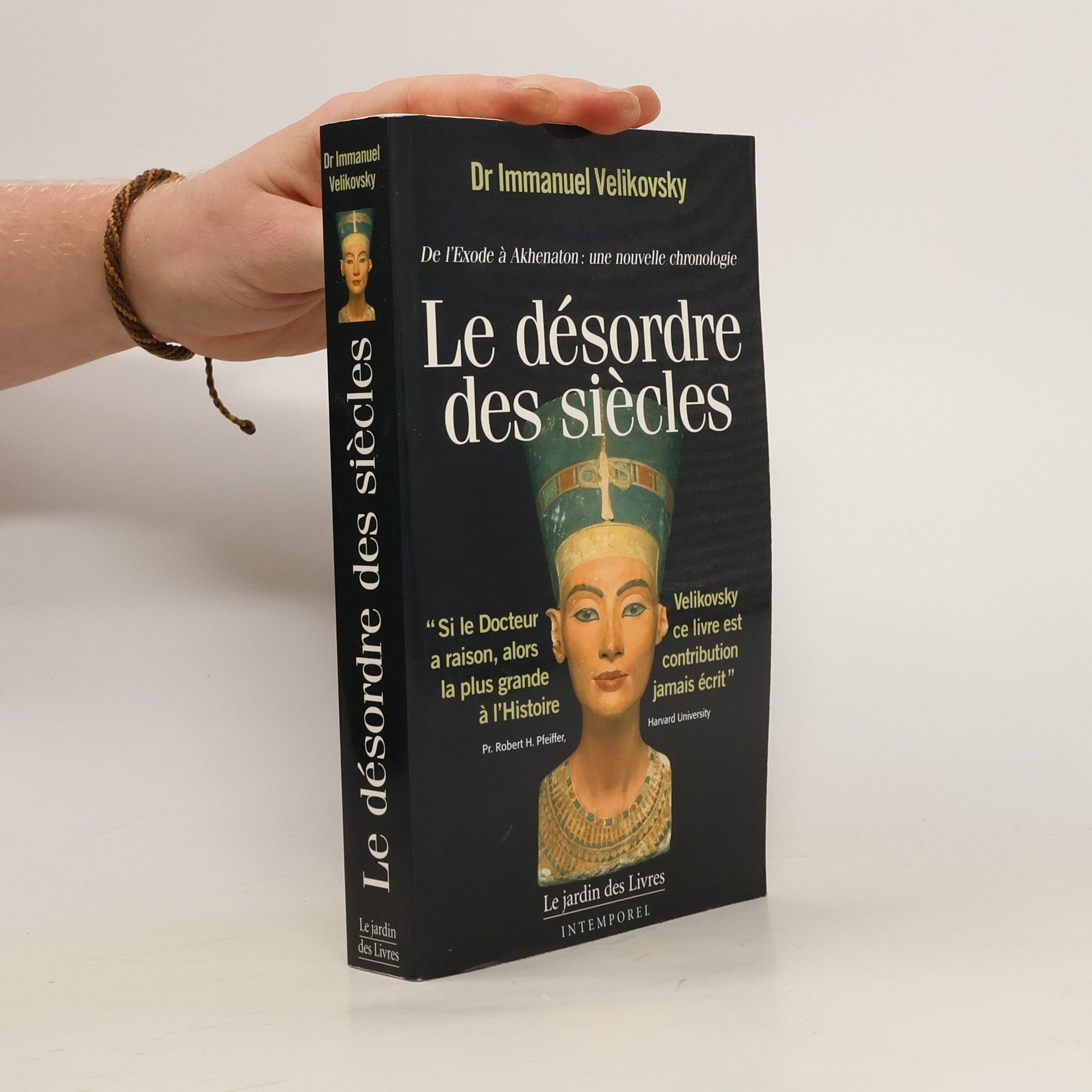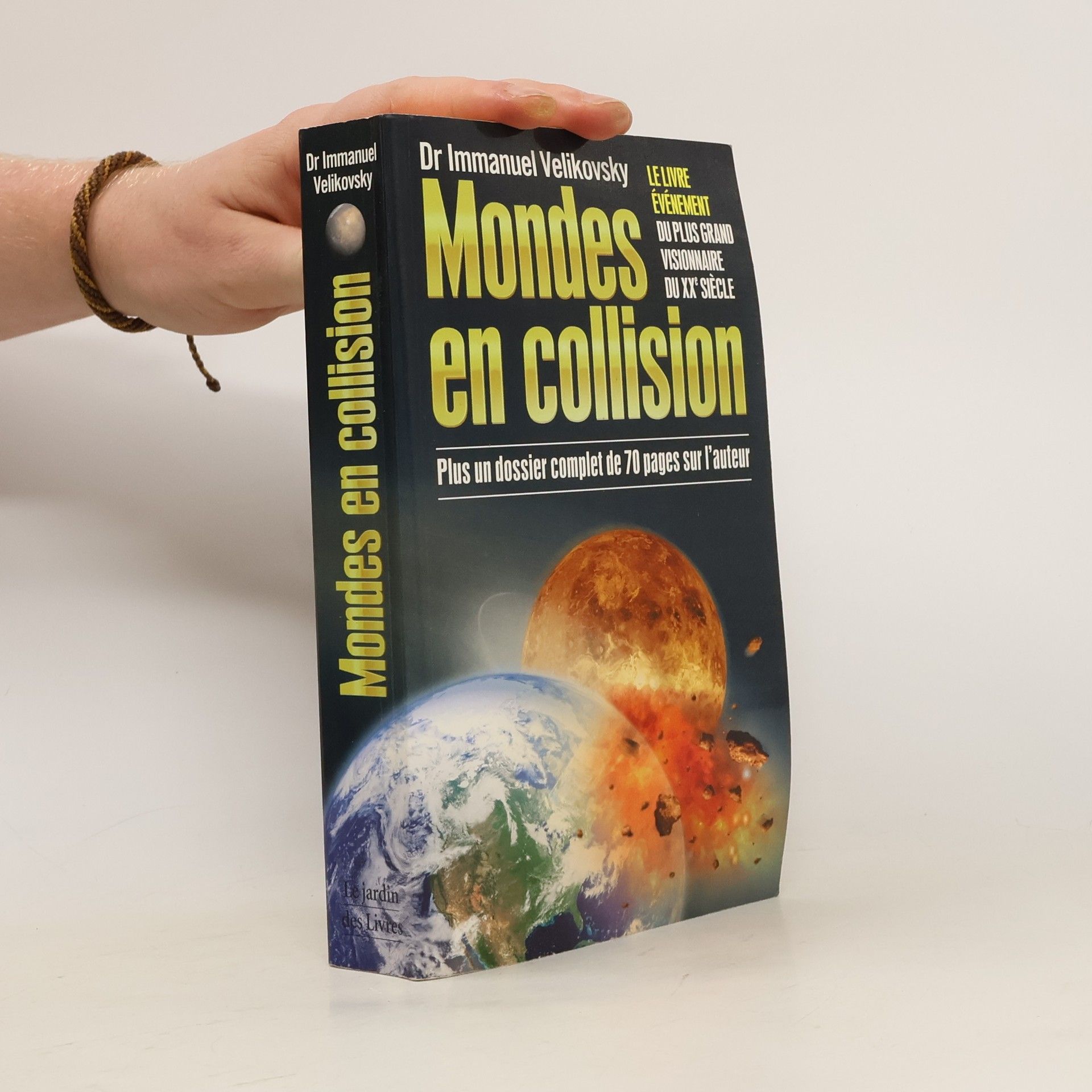Mondes en collision
- 370pages
- 13 heures de lecture
Immanuel Velikovsky fut un érudit indépendant réputé pour ses réinterprétations controversées de l'histoire ancienne. Il a utilisé la mythologie comparée et les sources littéraires anciennes pour postuler que la Terre avait connu des rencontres célestes catastrophiques dans l'Antiquité. Bien que ses théories aient été vivement rejetées par le monde universitaire, ses livres ont largement trouvé un écho auprès du public, suscitant un débat considérable.







C'est en tentant de coordonner l'histoire des rois d'Israël à celle des pharaons égyptiens qu'Immanuel Velikovsky avait fait sa plus grande découverte: celle du Papyrus d'Ipuwer qui raconte lui aussi les plaies d'Egypte bibliques. Mais avec une différence notable: il s'agit du récit d'un modeste scribe égyptien, dépassé par les événements cataclysmiques qui se sont soudain abattus sur son pays. Pour Velikovsky, le Papyrus d'Ipuwer est l'une des innombrables preuves que le monde antique a été victime d'un cataclysme sans précédent,- et aussi que la chronologie de l'Histoire telle qu'on nous la présente actuellement ne correspond pas à la réalité. Sa thèse a été validée par le Pr.. Claude Schaeffer du Collège de France: Le Désordre des siècles propose une nouvelle et fascinante. chronologie (allant de la période de l'Exode .jusqu'au règne d'Akhenaton ) avec une eéécriture de l'Histoire.
Par quelle force inouïe des millions d'animaux et d'êtres humains ont-ils été réduits en morceaux et agglutinés dans des caves ? Pourquoi le pôle Nord était-il auparavant tropical ? Est-il exact que les pôles ont été inversés et que l'axe terrestre a été changé ? Pourquoi retrouve-t-on en Espagne des rochers qui proviennent des Alpes ? Dans ce livre unique, la suite logique de Mondes en Collision le Dr Immanuel Velikovsky prouve point par point que notre Terre a vécu des bouleversements d'une force inouïe, thèse que les géologues commencent simplement à reconnaître aujourd'hui. Combattu au moment de sa parution, le temps a donné raison aux Grands Bouleversements Terrestres devenu, depuis, un grand classique. Copié, plagié, mais jamais égalé, ce livre du Dr Velikovsky est le premier à avoir réussi à raconter la véritable histoire de notre planète.
This is the first volume of the series Ages in Chaos, in which Immanuel Velikovsky undertakes a reconstruction of the history of antiquity. With utmost precision and the exciting style of a presentation that's typical for him he shows, beyond doubt, what nobody would consider possible: in the conventional history of Egypt - and therefore also of many neighboring cultures - a span of 600 years is described, which has never happened! This assertion is as unbelievable and outrageous as the assertions in Worlds in Collision or Earth in Upheaval. But Velikovsky takes us on a detailed and highly interesting journey through the - corrected - history and makes us a witness to how many question marks disappear, doubts vanish and corresponding facts from the entire Near East furnish a picture of overall conformity and correctness. You will meet an Egyptian eyewitness of the biblical plagues and the mysterious Queen of Sheba. You will find out to where her legendary visit led her. You will, moreover, learn surprising details about the temple of Solomon and learn who was behind its sacking. In the end you do not only wonder how conventional historiography has come into existence, but why it is still taught and published. Just as Velikovsky became the father of "neo-catastrophism" by Worlds in Collision, he became the father of "new chronology" by Ages in Chaos.
Focusing on Ramses II, Immanuel Velikovsky challenges traditional views of ancient history by placing this iconic pharaoh in the 7th century B.C., rather than the 13th century. He reveals Ramses II's conflict with Nebuchadnezzar and shares intriguing personal insights from the latter's autobiography. Velikovsky critiques established historical narratives, arguing that concepts like the Hittite Empire are fabrications. Additionally, he explores the implications of radiocarbon dating on historical chronology, offering a fresh perspective on the Bronze and Iron Ages.
The book explores the enduring legacy of Oedipus, a central figure in Greek mythology known for his tragic fate. It delves into the profound impact of his story on literature and psychology, particularly through Freud's interpretation. The narrative examines how Oedipus's tale has resonated through the ages, influencing countless writers and shaping cultural discussions around fate and identity.
Focusing on the campaigns of Alexander the Great, this volume connects revised and classical chronologies, completing Velikovsky's reconstruction of ancient history. It is the second volume in terms of publication but serves as the final installment in the Ages in Chaos series. Each of its three independent parts contributes to its significance, making it accessible and engaging for readers, regardless of their familiarity with previous volumes.
After the publication of Worlds in Collision Immanuel Velikovsky was confronted with the argument that in the shape of the earth and in the flora and fauna there are no traces of the natural catastrophes he had described. Therefore a few years later he published Earth in Upheaval, which not only supports the historical documents by very impressive geological and paleontological material, but even arrives at the same conclusions just based on the testimony of stones and bones. Earth in Upheaval – a very exactly investigated and easily understandable book – contains material that completely revolutionizes our view of the history of the earth. For all those who have ever wondered about the evolution of the earth, the formation of mountains and oceans, the origin of coal or fossils, the question of the ice ages and the history of animal and plant species, Earth in Upheaval is a MUST-READ!
The battle of Kadesh-Carchemish -- Ramses II and Nebuchadnezzar in war and peace -- The tomb of King Ahiram -- The "forgotten empire" -- The autobiography of Nebuchadnezzar -- The "forgotten empire" : testimony of art -- Exodus or exile -- Epilogue : questions and answers -- Supplement : the pitfalls of radiocarbon dating
Velikovsky returns to his roots as a psychologist and psychoanalytical therapist, with humanity as a whole as his patient. After an extremely revealing overview of the foundations of the various psychoanalytical systems, he makes the step into crowd psychology and reopens the case of Worlds in Collision from a totally different point of view: as a psychoanalytical case study.